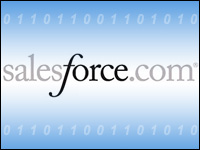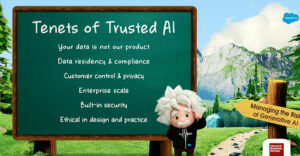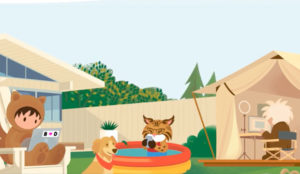
Salesforce.com is rolling out a limited pilot of yet another social media initiative — Salesforce Communities. The offering combines its Chatter product, its Salesforce.com business processes, and an underlying social intelligence that makes it easy to show people the right information and give them the correct access to experts, said Doug Bewsher, senior vice president, Salesforce Chatter.
The purpose of the platform is for companies to use it to create communities — but not just any type of community, Bewsher told CRM Buyer. Rather, Salesforce.com has built something that it expects will encourage true communication and collaboration.
“We are interested in building communities, not colonies,” as Bewsher put it.
Chatter Leads the Way
The Chatter tool was a driver behind this concept, Bewsher continued. “People started to see the way they work and communicate transform, thanks to Chatter. What we are hoping to do is extend that productivity to the enterprise’s customers and partners.”
Indeed, companies that took advantage of Chatter increased productivity by an average of 12.5 percent, Nucleus Research Vice President Rebecca Wettemann, reported.
“I could see Communities extending that potential benefit to other entities in the company’s ecosystem,” she told CRM Buyer.
Few Other Options
Salesforce.com Communities might have a potent productivity argument, to say nothing of its Chatter brand, but there is another factor in its favor — there is little else on the market that is as easy to deploy and to customize, Bewsher said.
“Companies can invest in mega portals that are very expensive but don’t have any real social collaboration available,” he said. “There are also social community portals or forums that invite conversations, usually among customers.”
But these seem to engender only limited conversation, Bewsher noted. “I could go to a forum of a vendor and find people who believe they have been overcharged. But you never find conversations on real business issues.”
Tools to Spur the Conversation
One reason for that, said, is that these forums lack the tools to bring the quality of the conversations up a notch or three or 10.
Salesforce.com Communities comes equipped with three buckets of functionality based on the feature sets found in traditional CRM suites:
- Sales features that will allow partners drive business through deal registration, access to sales tools, and collaboration with experts;
- Customer service functionality, which social enterprises can use to form knowledge-driven, peer-assisted and agent-assisted service experiences; and
- Marketing features that will allow companies to create communities around events, campaigns or spin up focus groups.
There are other features as well that make Communities enticing, Bewsher said. Built on Force.com, it lets users develop multiple communities for different stakeholders, but with the same look and feel and information.
“They benefit from having a core data structure that underlies all of the different communities,” he noted.
GE as Early Adopter
GE Capital was an early adopter and through using it was able to accomplish a long-held goal, Bewsher said.
“Their business problem was they wanted to move from having a transactional relationship with their partners to building a deep relationship with them. GE already does this at the high end, but they wanted that experience for their SMB partners and customers,” he explained.
The community it created was designed to focus on the companies, not just their sales transactions.
“It brought companies together to collaborate and discuss best practice ideas. At the same time, GE Capital is also a member, and that allows it to share its thinking on issues,” Bewsher said.
Why This Matters
Salesforce.com Communities is a significant product in that it showcases the ability to link external and internal communications in a meaningful way, Nucleus Research’s Wettemann said.
“From a tech perspective, this is more of a Salesforce.com showcase for its Force.com platform — and from a competitive perspective, it is to show that Salesforce.com is able to provide partner and CRM self-service as well,” she observed.
Perhaps its most ambitious goal with Communities, continued Wettemann, is to make Chatter even stickier than it already is — which, if enterprises adopt the kind of social life Salesforce.com envisions, it will certainly achieve.
Salesforce.com Communities will be generally available next year.





















































